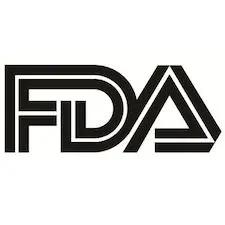Article
Balovaptan Fails Phase 2 Efficacy Endpoints for Pediatric Autism
Author(s):
Findings from the aV1ation trial highlight the challenges of modern autism clinical research and outcomes of care.
Eric Hollander, MD

Promising V1a receptor antagonist balovaptan failed to improve measures of socialization and communication among children with diagnosed autism spectrum disorder, according to findings from the phase 2 aV1ation trial.
In new data published this week, 2 different doses of the Roche-developed investigational drug were tolerable yet short of primary and secondary efficacy endpoints for children with autism aged ≥5 years old treated for 24 weeks. The findings show the difficulty of both identifying potential treatments for core symptoms of the spectrum disorder, as well as in adequately designing clinical outcomes trials for such treatments.
Led by Eric Hollander, MD, of the department of psychiatry and behavioral sciences at Albert Einstein College of Medicine, aV1ation investigators sought to interpret the efficacy, safety and tolerability of balovaptan versus placebo in children and adolescents with autism spectrum disorder. They noted that 4 mg and 10 mg doses of the specific-targeting agent were associated with clinically meaningful and dose dependent improvements to patients’ Vineland-II Adaptive Behavioral Composite (ABC) scores from baseline versus placebo in a previous trial.
However, in that same trial, balovaptan failed to improve change in 12-week Social Responsiveness Scale 2nd Edition (SRS-2) total scores.
The team conducted a randomized, double-blind, parallel, placebo-controlled phase 2 trial over 24 weeks. Children and adolescents aged 5 – 17 years old with physician-diagnosed autism spectrum disorder and IQ scores ≥70 points were screened and randomized to either 4 mg (n = 91) or 10 mg (n = 126) adult-equivalent balovaptan, or placebo (n = 122), until the 4 mg treatment arm was discontinued.
Investigators sought a primary efficacy endpoint of change in Vineland-II two-domain composite (2DC) socialization and communication domain scores from baseline to week 24. Secondary endpoints included change in ABC scores at weeks 12 and 24, as well as 2DC scores for communication, socialization and daily living skill domains at week 12. Hollander and colleagues assessed autism core symptom severity and change by improvements in Clinical Global Impression-Severity (CGI-S) and Improvement (CGI-I) on a scale from 1 (no symptoms) to 7 (very severe symptoms).
The final primary analysis included 86 participants receiving 10 mg balovaptan adult-equivalent doses and 81 receiving placebo. Mean participant age was 12.1 years old (SD, 3.4); 139 (83.2%) were male.
Hollander and colleagues observed no statistically significant differences among the treatment arm and placebo arm in adjusted change from baseline in 2DC score at week 24, with a least-squares mean of -0.16 (90% CI, -2.56 to 2.23; P = .91). None of the secondary efficacy endpoints were achieved among the balovaptan arm either.
In reviewing the missed outcomes, the team emphasized the current lack of criteria for metrics in clinical improvement of autism in intervention-based trials. The available means of assessment “do not often assess (autism)-specific symptoms or were not developed to measure change during treatment,” they wrote. Additionally, each of ABC, the CGI and Vineland Adaptive Behavior Scales run the risk of rater biases.
“An unmet need remains to develop better outcome measures for ASD trials that focus on quantification of symptom improvement,” investigators wrote. “An ideal outcome measure would be more closely related to the underlying neurobiological origins of ASD.”
They stressed the need for future clinical trials to consider the benefit of objective quantitative outcomes, derived via digital biomarkers; behavioral task performances, electroencephalograms; or eye tracking. What’s more, they emphasized the burden of autism spectrum disorder heterogeneity on the assessment of any considered overarching “one-size-fits-all treatment” such as a targeted antagonist agent.
“For example, genetic variation in V1a receptors has been observed, and it is possible that participants’ response to balovaptan may vary depending on their genetic background; however, future studies are required to determine the relationship between these factors,” they wrote.
Though the therapy was shown to be tolerable and safe over 24 weeks in treated children and adolescents, the team concluded balovaptan and V1a receptor antagonism do not provide improved social and communication function in pediatric autism spectrum disorder.
“Of note, aV1ation is one of only a small number of well-powered pharmaceutical therapeutics’ trials in children and adolescents with ASD with a robust clinical trial design,” they wrote. “These data may provide insights into this population, the role of vasopressin signaling in ASD, and the necessary considerations for appropriate trial design and outcome measures for pediatric participants.”
The study, “Balovaptan vs Placebo for Social Communication in Childhood Autism Spectrum Disorder,” was published online in JAMA Psychiatry.





